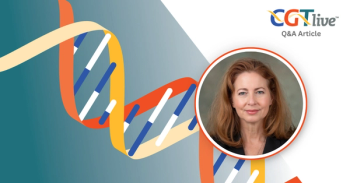
Gene Expression Profiles Characterize CAR T-Cells in Solid and Hematological Tumors
Further analysis will be performed to elucidate which characteristics correlate with optimal cell therapy behavior.
Researchers from the Parker Institute for Cancer Immunotherapy (PICI) and Nanostring Technologies have elucidated
Data from the analysis were presented at the Society for Immunotherapy of Cancer’s (SITC) 37th Annual Meeting, November 8-12, 2022, in Boston, Massachusetts, by Sarah E. Church, MS, PhD, senior scientist, translational science, Nanostring Technologies.1
“The Parker Institute for Cancer Immunotherapy and our affiliated investigators and collaboration partners are dedicated to developing safer, more effective treatments for patients through the pursuit of bold, transformative clinical research,” Ute Dugan, MD, PhD, chief medical officer, PICI, said in a statement.2 “By highlighting this work at SITC, we aim to demonstrate a spectrum of strides that are moving the field of immunotherapy forward to improve long-term survival for patients.”
PICI and Nanostring collaborated to characterize up to 1,000 apheresis and cellular therapy infusion products to identify and better understand molecular pathways and features that correlate with optimal cellular therapies in terms of toxicity and response.1 They analyzed data from 4 PICI network Cell Therapy Centers, which expanded to 8 in phase 2. They characterized CAR T-cells with the nCounter® CAR-T Characterization Panel, which measures metabolic fitness, phenotype, TCR diversity, toxicity, activation, persistence, exhaustion and cell typing along with individual transgene expression.
READ MORE:
As of October 14, 2022, 52% of analyzed participants had hematological tumors, 27% had solid tumors, 4% had metastatic tumors, and 17% were healthy. Cancer types included non-Hodgkin lymphomas, leukemias, non-small cell lung cancer, melanoma, glioblastoma multiforme, breast to brain metastatic, andprostate metastatic cancers. Healthy participants were transduced and nontransduced for individual site process controls. CAR T targets included CD19, CD20, HER2, H3.3K27M, CD123, IL13RA2, PSCA, and melanoma antigen engineered.
Church and colleagues analyzed phenotype by looking at 199 genes dealing with notch, Wnt signaling, TGF-beta, Th1, Th2, Th9, Treg, innate-like T cells, and retinoic acid signaling; cell types by looking at 58 genes dealing with immune cell profiling; T-cell receptor (TCR) diversity by looking at 104 genes dealing with TCR content; activation by looking at 299 genes dealing with chemokine, interleukin, TCR, JAK-STAT, MAPK and PI3K signaling, costimulatory molecules, Myc targets, NFAT, and antigen processing and presentation; metabolism by looking at 210 genes dealing with glycolysis, mitochondria biogenesis, fatty acids, glutamine and 1-carbon metabolism, circadian clock, oxidative phosphorylation, mTOR, cell cycle, and autophagy; persistence by looking at 35 genes dealing with T cell migration and type profiling; exhaustion by looking at 139 genes dealing with T cell exhaustion markers, apoptosis, interactions with non-lymphoid cells, and costimulatory molecules; and toxicity by looking at 253 molecules dealing with natural killer (NK) cell cytotoxicity, NKT receptors, NF-kB, type 1 interferon, type 2 interferon, and chemokine and interleukin signaling.
The initial GEPs Church and colleagues put together will be meta-analyzed alongside individual site-specific analyses. They will explore associations between manufacturing conditions, gene expression and outcomes, as well as differences across cancer types and target types. One particular finding in the GEPs was that between site and construct comparisons and between normal and disease comparisons, retinoic acid signaling had the highest significance score in differentiating the 2 pathways.
“This is the first data output for this one-of-a kind study characterizing GEPs in CAR-T cells. We anticipate that this information will prove useful across many aspects of the development, manufacturing and clinical application of cellular therapies, and we hope that the findings will lead to improvements in the safety and efficacy of cell therapy products. Data from this project will be made publicly available to the scientific community,” Church and colleagues concluded their poster.1
REFERENCES
1. Church S, Bailey C, Phan P, et al. First data readout of standardized transcriptional profiling for optimizing cellular therapies: A multi-center PICI-NanoString collaboration. Presented at: SITC 37th Annual Meeting, November 8-12, 2022, Boston, Massachusetts.
2. PICI Network Researchers to Present at 2022 Annual Meeting of Society for Immunotherapy of Cancer #SITC22. News release. PICI. October 21, 2022.
Newsletter
Stay at the forefront of cutting-edge science with CGT—your direct line to expert insights, breakthrough data, and real-time coverage of the latest advancements in cell and gene therapy.

















































